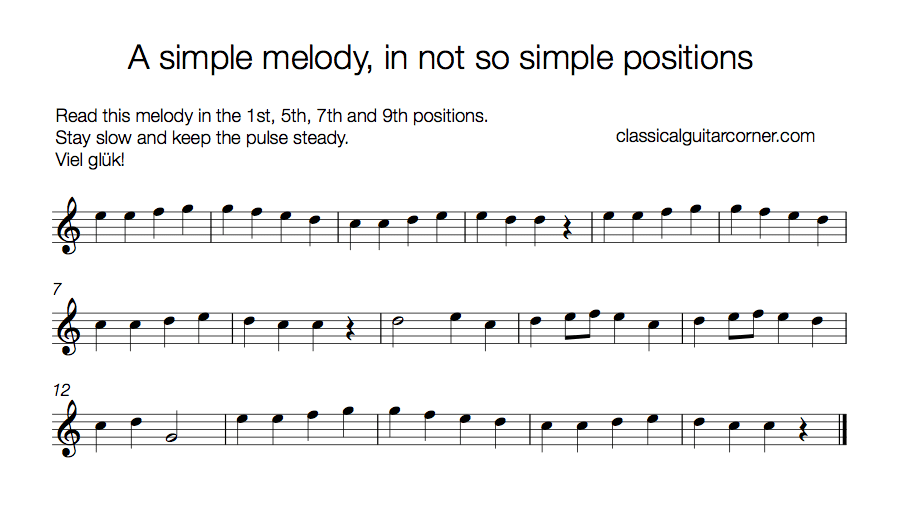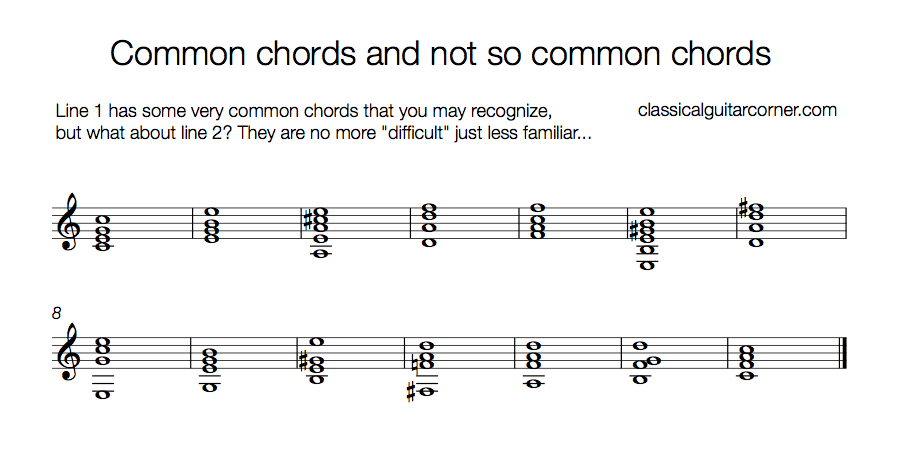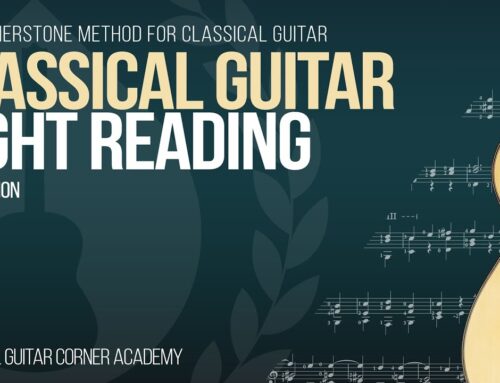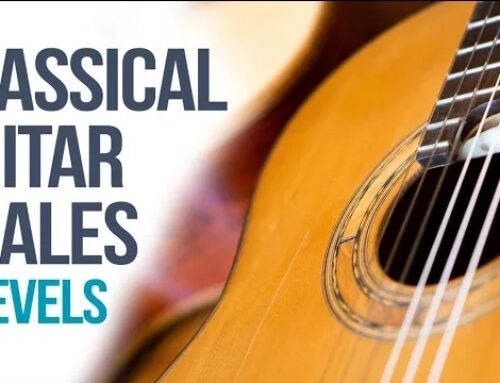Improve Your Sight Reading on Guitar
In this article we’ll look at how to improve your sight reading on guitar. This is an intermediate lesson.
In our beginner lesson on we offered a very broad overview. Here we are going to start training your fingerboard knowledge.
Only 12 Notes to Learn
When you think about it, there really are not that many notes to learn, there are 12 frets (the notes repeat after the 12th fret) and six strings. Compare that to learning a language, which has thousands of words and the ol’ fingerboard, doesn’t seem so intimidating. The real reason it seems like such a maze between the fifth fret and the twelfth is that we just don’t push ourselves to become familiar with the notes.
A very simple but effective exercise is to take a simple melody, one that is easily played in the first position, and play it in higher positions. Let’s take this Beethoven melody for an example. In first position it is quite straightforward, but let’s try and play it in the fifth position. Then how about the seventh and ninth?
One problem that arises with this kind of exercise is that soon enough you will start to memorize the melodies you are playing so make sure to keep using fresh material to test your fingerboard knowledge.
Aim to think of the notes you are playing rather that any patterns that might emerge. One of the great cheats on the guitar is to shift patterns and shapes around the fingerboard without having to think about the actual notes. To be sure, it has its uses but in the long run it won’t help you understand the fingerboard any more than movie subtitles will teach you a language.
Pattern recognition: Chords
Next up is recognizing the chord shapes that we talked about in level 1 and in L214. Recognizing chord shapes is a form of pattern recognition and it is similar to how we read words. There is a famous email that circulates the global inboxes, and even though it was never a study done at Cambridge, it serves our point for sight reading:
“Aoccdrnig to a rscheearch at Cmabrigde Uinervtisy, it deosn’t mttaer in waht oredr the ltteers in a wrod are, the olny iprmoatnt tihng is taht the frist and lsat ltteers be at the rghit pclae. The rset can be a toatl mses and you can sitll raed it wouthit porbelm. Tihs is bcuseae the huamn mnid deos not raed ervey lteter by istlef, but the wrod as a wlohe.”
Pretty neat huh? Well music functions in a similar way. If you have to read every individual note every time a chord comes along it is no doubt going to slow you down and break the pulse of the music. So, you need to develop recognition of various chords. You probably already know a few. How about the chords on line 1 below?
Line 2 has inversions of similar chords to line 1, and even though many of the harmonies are the same, the spelling of the chords makes them tricky to identify. Well, for now at least. With time and dedication you will be able to identify these chords as quickly as any others.
How about in higher positions? There is nothing more complex about playing chords in higher positions; it is just less familiar to you. So, really give some time to learning chord spellings in higher positions.
If you would like to improve your sight reading right now, you can become a member here!








Hello Simon,
I am interested in a membership but wanted to check out your teaching style first. I have filled out the email and name “form” on this site but have not received the email with the lesson in it yet. Does this take a while?
Thank you!